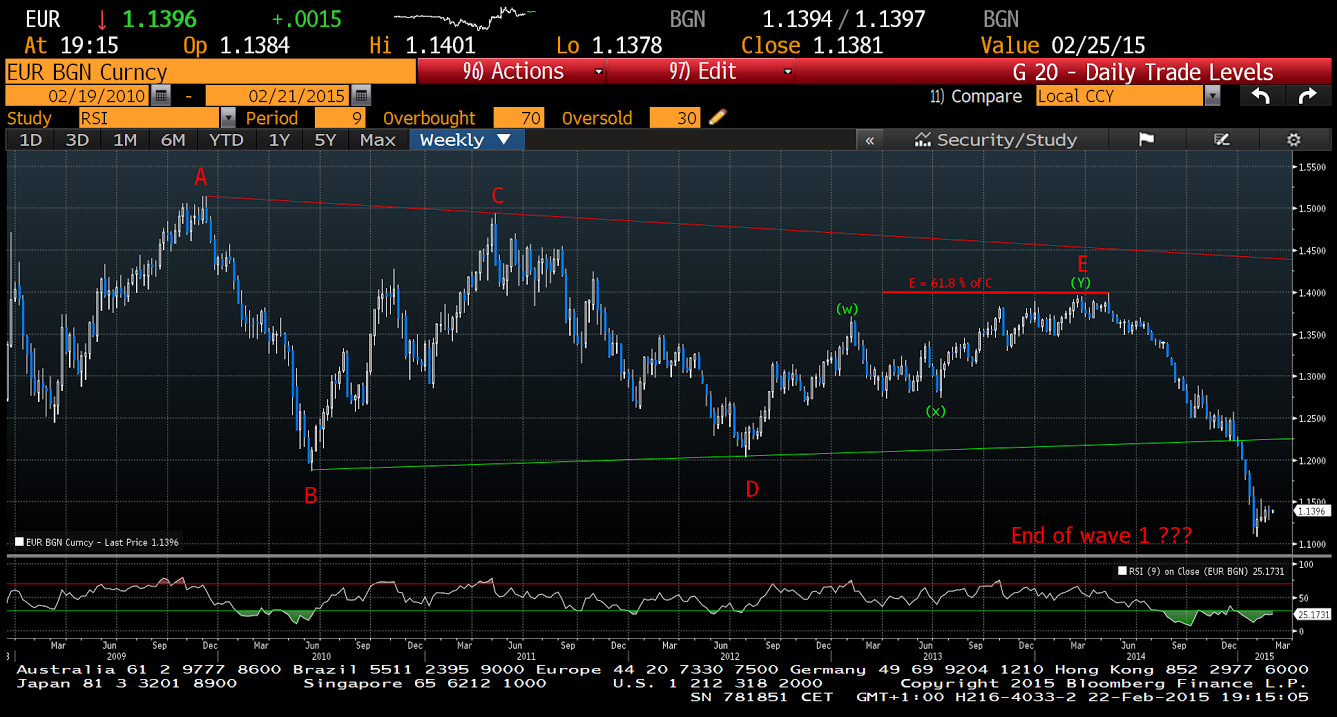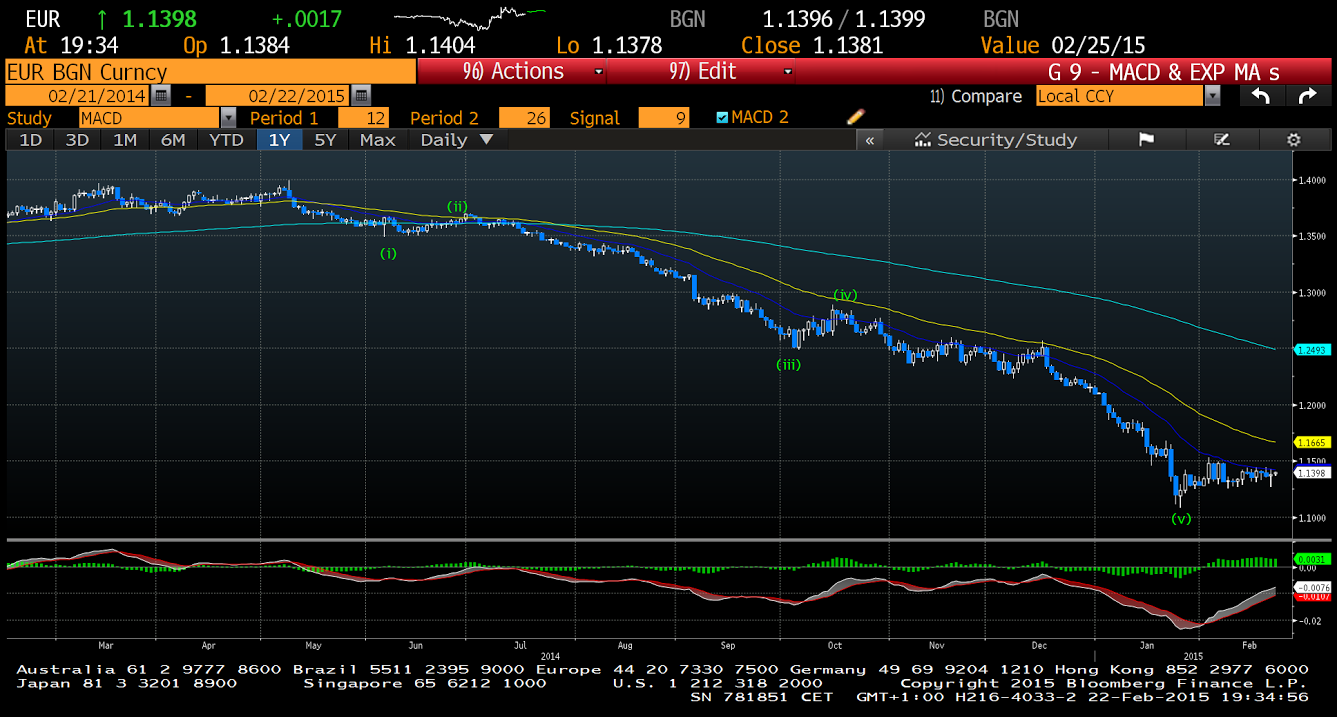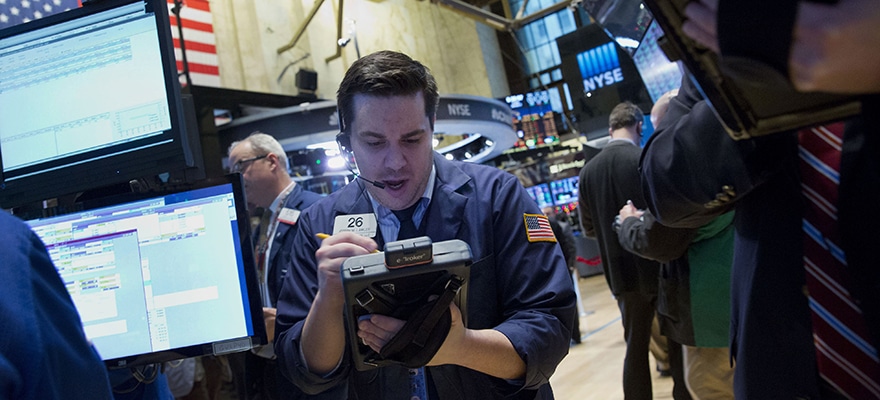What effect will Greece have on the Euro this week?
Once again this last week we traded not on fundamental data or from a technical analysis stance but on Greece. There were many headlines driving the price higher and lower but as professional traders we remain with our view from the price action until the markets show us that we are wrong.
Based on the EUR/USD’s performance on Friday you can see from the price action, with euro closing at the day’s opening level, that the market is waiting for the details to be hashed out. But will this really effect the underlying price action and where do we stand now with the euro?
The Bearish Euro
The euro has lost 20 percent since last May with bearish sentiment toward the euro at extreme levels since late last year. With parity being widely cited now amongst many people, where do we think the euro will trade once the dust has settled (hopefully later this week)?
I have been trading Forex for over 20 years at major international banks, retail broker and as an asset manager. One of the things I have learnt is that when the masses are all thinking an event will happen it is often wise to consider the opposite.
Recently the front cover of The Economist magazine revealed ill will toward the euro is spreading beyond currency traders declaring the death of European economies. But this is nothing compared to Newsweek’s Cover in May 2010 that announced "The End of the Euro" just weeks before the euro rallied more than 25% from its lows.
The Opposite Trend of Magazine Covers
It is worth noting that magazine covers, however crazy it may sound, often offer a signal that a trend reversal is due. But how can we see from data when the market is at such extreme levels. Well one such method supplied to us on a weekly basis is the Commitment of Traders Report from the CME which, although showing a small drop in the amount of short positions, still shows an extreme 5-times larger short position than long.
This is all well and good but we cannot use these alone to tell us of a turn in the market. We have to have an understanding of the underlying price action in both the long and short term to know exactly where we stand so we can put all the cards in order giving us the highest probability and lowest risk trades, even if it goes against what you might be hearing repeatedly through news and supposed collective wisdom.
The Bread and Butter of Profits
I personally am a technical trader and believe that all information is given to us in the price. I like to use a mixture of Elliot-wave analysis and candlestick analysis as well as a few moving averages and MACD to let me know exactly where we are in the price cycle.
I would not say that that I am a counter trader in anyway, I love trends as they are the bread and butter of our profits. But over the many years of trading it is important to realise when these trends may be ending so that we can prepare our trading plan accordingly.
So where do we stand now on a longer-term basis. Looking at the weekly chart we can see that, following an ABCDE correction, we started to trade lower in an impulsive decline since the May 1.3993 high. If we look at the RSI we can see divergence and that we are trying to get out of oversold territory following the last few weeks' consolidation. We can also clearly see that there has been no real pull-back in the euro with the price accelerating to the down side from mid-December.

SOURCE: Bloomberg Terminal Chart
Now that we know where we stand in the big picture, if we look at the daily chart we can see that if our wave count is correct then we have completed what looks like 5 wave downs. Taking into account the extreme positioning in the COT report and the constant bearish news combined with the upward sloping momentum of the MACD, a multi-week upward corrective movement cannot be dismissed. Looking at the price action in the dollar index, any sell-off from the Greece fallout should be short and sharp and limited to an Elliot-wave target around the 1.0750 level.
So if we haven’t already started a multi-week rally in the euro then we will very soon. If you believe, as I do, that the market has already priced in all the relevant news, then it's priced the institutional money placed in these short euro trades many weeks ago and the recent data showing that the strengthening dollar is effecting US companies. The probability that a low is in place increases by the day. Although the pair will continue trading on sentiment over the coming week the chances of a relief rally as a deal is reached is increasingly likely and any sell-off will be short-lived with the underlying evidence on a technical basis that a bottom is in place.

SOURCE: Bloomberg Terminal Chart
This article is part of the Forex Magnates Community project. If you wish to become a guest contributor, please apply here: UGC Form.


















